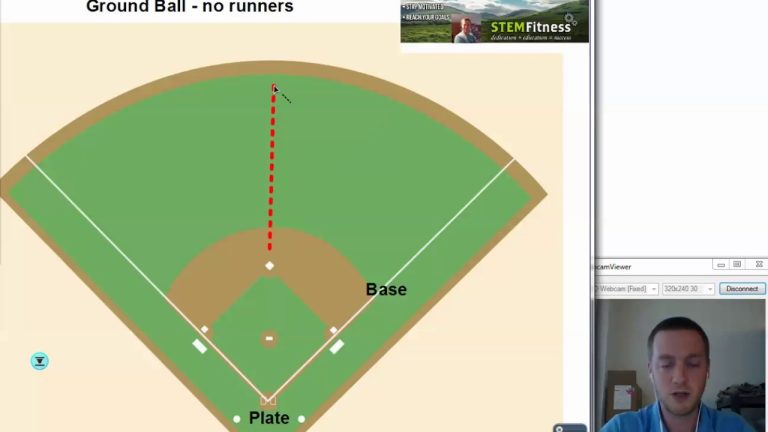
In the vast expanse of the outfield, where every step and decision can make or break a play, umpires must navigate the complexities of mechanics with precision and finesse. From determining fair or foul balls to making critical calls on catches and potential home runs, their role is indispensable in maintaining the integrity of the game. In this article, we delve into the art of umpire mechanics for plays in the outfield, exploring the techniques and strategies that ensure accuracy, clarity, and the seamless flow of the game.
What are R1, R2, and R3 in baseball?
In baseball, the abbreviations R1, R2, and R3 refer to the specific positions of runners on the bases. R1 represents the runner positioned at first base, R2 denotes the runner at second base, and R3 signifies the runner positioned at third base. These abbreviations are commonly used by umpires and commentators to quickly convey the locations of runners during a game.
What is the correct stance for an umpire?
The proper umpire stance is essential for maintaining a fair and accurate game. Positioned in the catcher’s box, the home plate umpire should lower their torso, ensuring that their chin is slightly above the crown of the catcher’s helmet. By doing so, the umpire establishes an unobstructed line of sight to all areas of the strike zone, including the outside corner of the plate. This stance allows them to closely monitor the game without the need to constantly turn their head, ensuring consistent and unbiased calls.
Maintaining a clear line of sight is crucial for umpires, and the proper stance enables them to achieve this. By positioning themselves correctly, umpires can effectively evaluate each pitch and make accurate calls. The lowered torso and elevated chin create a direct line of vision to the strike zone, ensuring that no part of it is obscured. This stance allows umpires to focus solely on the game, without any distractions or limitations, and ultimately promotes a fair and transparent playing field.
In conclusion, the proper umpire stance involves lowering the torso and positioning the chin slightly above the catcher’s helmet. This ensures a clear line of sight to all parts of the strike zone, including the outside corner of the plate. By adopting this stance, umpires can accurately assess pitches without the need to turn their heads, enhancing the integrity and fairness of the game.
What happens with the umpire mechanics when your partner gets into a rundown?
When your partner finds themselves in a rundown, the umpire mechanics dictate that you come to their aid by communicating “I’ve got this half”, but only after you have physically arrived and actually have half of the play. Until then, the original umpire must handle the entire rundown on their own. It is crucial to move in only when the play is moving away from you, ensuring a smooth and coordinated assistance.
Step-by-Step Techniques for Perfecting Outfield Umpire Mechanics
Are you ready to elevate your skills as an outfield umpire? Look no further! In this comprehensive guide, we will provide you with step-by-step techniques to perfect your mechanics and make accurate calls. From positioning yourself for the best view of the play to mastering the art of tracking the ball, we’ve got you covered. Get ready to take your umpiring game to the next level and become the go-to outfield umpire on the field!
When it comes to outfield umpire mechanics, proper positioning is paramount. To ensure you have the best view of the play, start by aligning yourself with the base path and the foul line. This will allow you to have a clear line of sight and make accurate calls on plays involving runners tagging up or advancing to the next base. Additionally, practice the art of tracking the ball from the moment it leaves the bat. By keeping your eyes focused on the ball’s trajectory, you will be able to anticipate where it will land and make quick decisions on fair or foul calls. With these step-by-step techniques, you’ll be well on your way to perfecting your outfield umpire mechanics and earning the respect of players, coaches, and fans alike.
Unleash Your Potential as an Outfield Umpire: Expert Tips and Tricks
Are you ready to take your umpiring skills to the next level? Unleash your potential as an outfield umpire with these expert tips and tricks. Master the art of positioning yourself for the best view, ensuring accurate calls and minimizing blind spots. Learn how to effectively communicate with fellow umpires, players, and coaches, creating a seamless and efficient game flow. Enhance your decision-making abilities by understanding the intricacies of different plays and becoming familiar with the rulebook inside out. With these invaluable insights, you’ll be able to confidently navigate any outfield scenario, leaving a lasting impact on the game. So, what are you waiting for? Step onto the field and unlock your true potential as an outfield umpire today.
In mastering the art of umpire mechanics for plays in the outfield, precision and adaptability are paramount. By seamlessly blending technical expertise with split-second decision-making, umpires ensure the integrity of the game and maintain fairness on the field. With a keen eye for detail and a commitment to upholding the rules, these unsung heroes play a crucial role in the smooth operation of baseball games, leaving players, coaches, and fans with a sense of satisfaction and confidence in the outcome.
